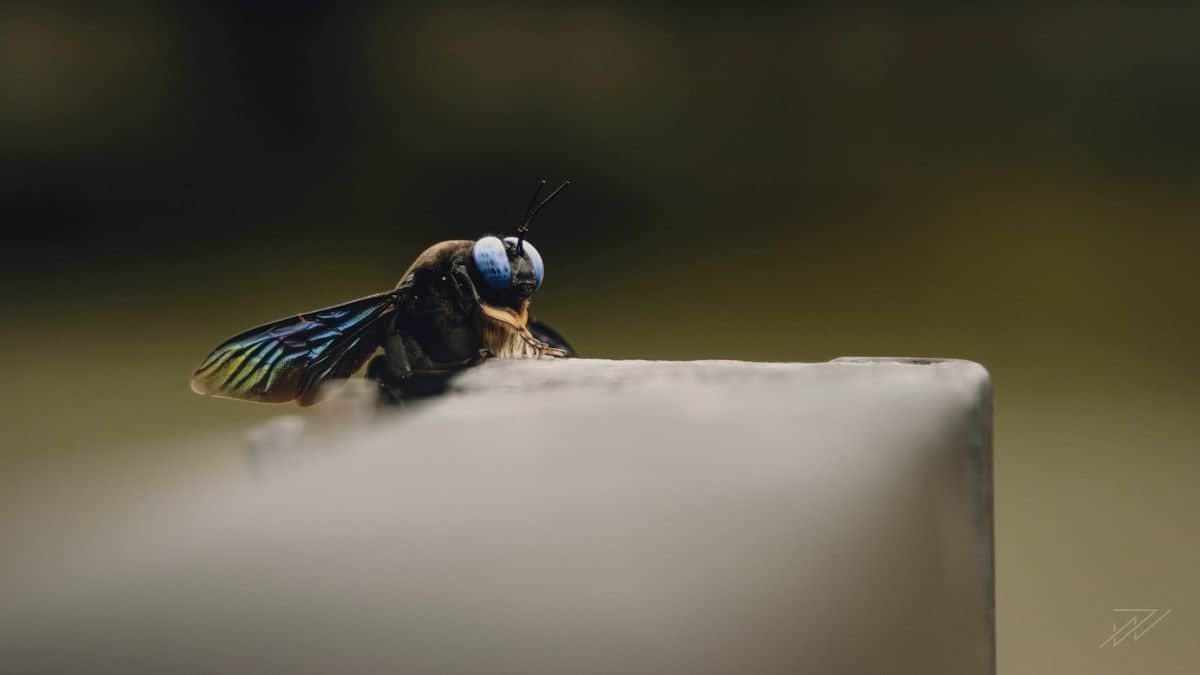Carpenter Bee Holes

Carpenter bees are large, solitary bees that are known for their distinctive habit of boring holes into wood to create nests for their young. These holes, typically around 1/2 inch in diameter, can be found in a variety of wooden structures, including trees, fences, and buildings. Carpenter bee holes are usually round and perfectly circular, with a smooth interior and a slightly raised edge. The bees use their powerful jaws and sharp teeth to excavate the wood, creating a tunnel that can extend several inches into the wood.
Identifying Carpenter Bee Holes

Carpenter bee holes can be identified by their characteristic shape and size. They are typically found in untreated wood, such as pine, cedar, or redwood, and are often located in areas that receive full sun. The holes may be clustered together, or they may be scattered individually over the surface of the wood. In addition to the holes themselves, carpenter bee activity can also be identified by the presence of sawdust or wood shavings near the holes, as well as the sound of buzzing or drilling coming from the area.
Carpenter Bee Biology and Behavior
Carpenter bees are solitary insects, meaning that they do not live in colonies like honeybees or ants. Instead, each female carpenter bee is responsible for building and provisioning her own nest. The female bee will typically choose a suitable piece of wood and begin boring a hole into it using her jaws and teeth. Once the hole is started, the bee will use her body to excavate the tunnel, removing wood shavings and sawdust as she goes. The tunnel will eventually be lined with a mixture of wood particles and saliva, which will help to protect the nest from moisture and other environmental factors.
| Characteristics of Carpenter Bee Holes | Description |
|---|---|
| Diameter | Typically around 1/2 inch |
| Shape | Round and perfectly circular |
| Location | Untreated wood, full sun |
| Depth | Several inches into the wood |

Preventing Carpenter Bee Damage

There are several steps that can be taken to prevent carpenter bee damage to wooden structures. One of the most effective methods is to use treated wood, such as pressure-treated lumber, which is less appealing to the bees. Additionally, painting or staining the wood can help to protect it from carpenter bee activity, as the bees tend to prefer bare, untreated wood. Sealing any existing holes or cracks in the wood can also help to prevent the bees from gaining access to the interior of the wood.
Managing Carpenter Bee Infestations
If a carpenter bee infestation is already present, there are several management options available. One approach is to use insecticidal dust or spray to kill the bees and prevent further nesting activity. However, this method can be toxic to other beneficial insects and should be used with caution. Another option is to wait until the bees have finished nesting and then fill the holes with a mixture of wood putty and insecticide. This will help to prevent the bees from re-nesting in the same area the following year.
- Use treated wood to deter carpenter bees
- Paint or stain the wood to protect it
- Seal any existing holes or cracks in the wood
- Use insecticidal dust or spray to kill the bees
- Fill holes with wood putty and insecticide to prevent re-nesting
What do carpenter bee holes look like?
+Carpenter bee holes are typically round and perfectly circular, with a smooth interior and a slightly raised edge. They are usually around 1⁄2 inch in diameter and can be found in untreated wood, such as pine, cedar, or redwood.
How can I prevent carpenter bee damage to my wooden structures?
+There are several steps you can take to prevent carpenter bee damage, including using treated wood, painting or staining the wood, and sealing any existing holes or cracks in the wood. You can also use insecticidal dust or spray to kill the bees and prevent further nesting activity.
Are carpenter bees aggressive and do they sting?
+Carpenter bees are generally non-aggressive and do not sting unless provoked. However, it’s still important to exercise caution when dealing with them, as they can still cause significant damage to wooden structures over time if left unchecked.



